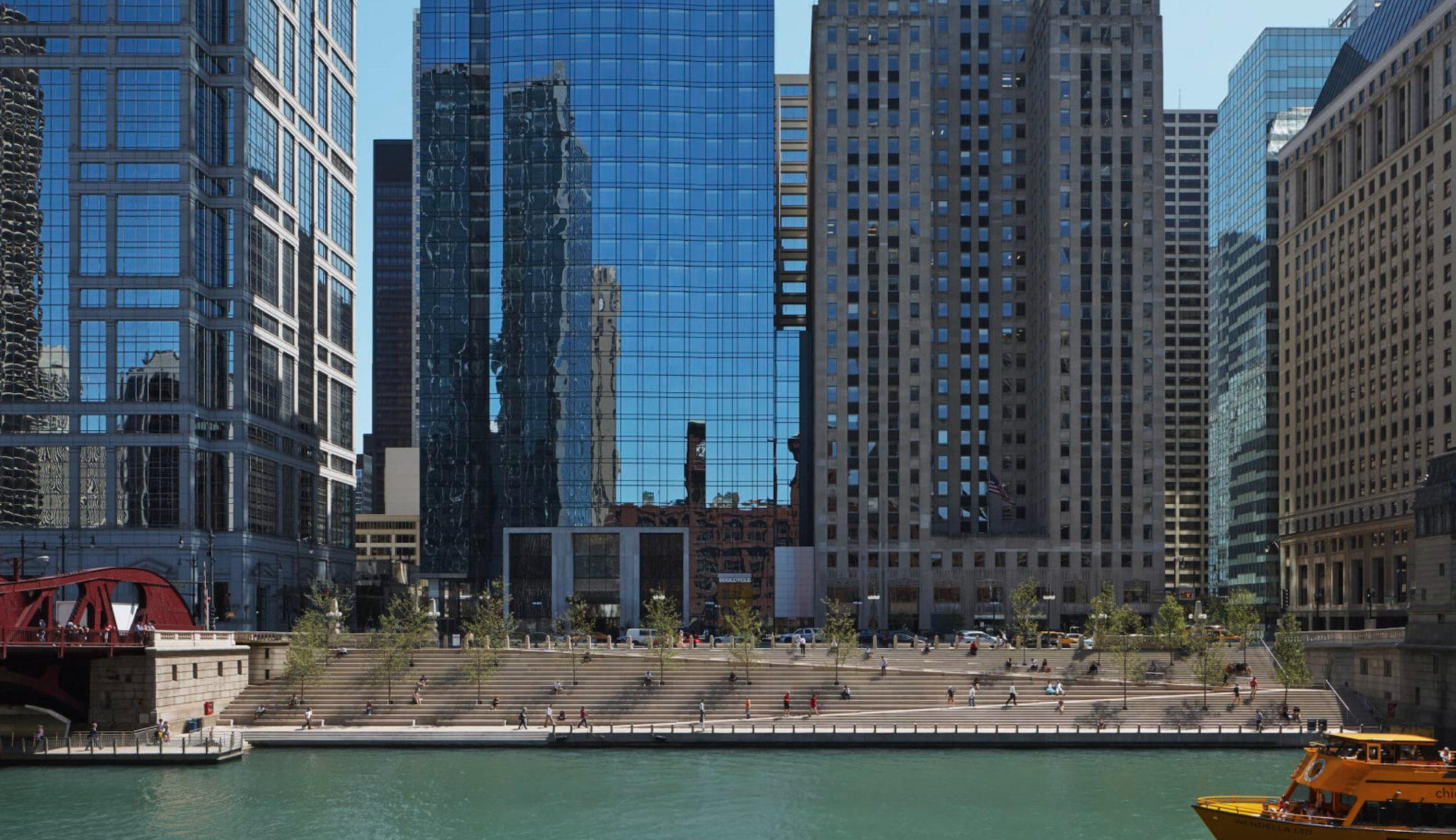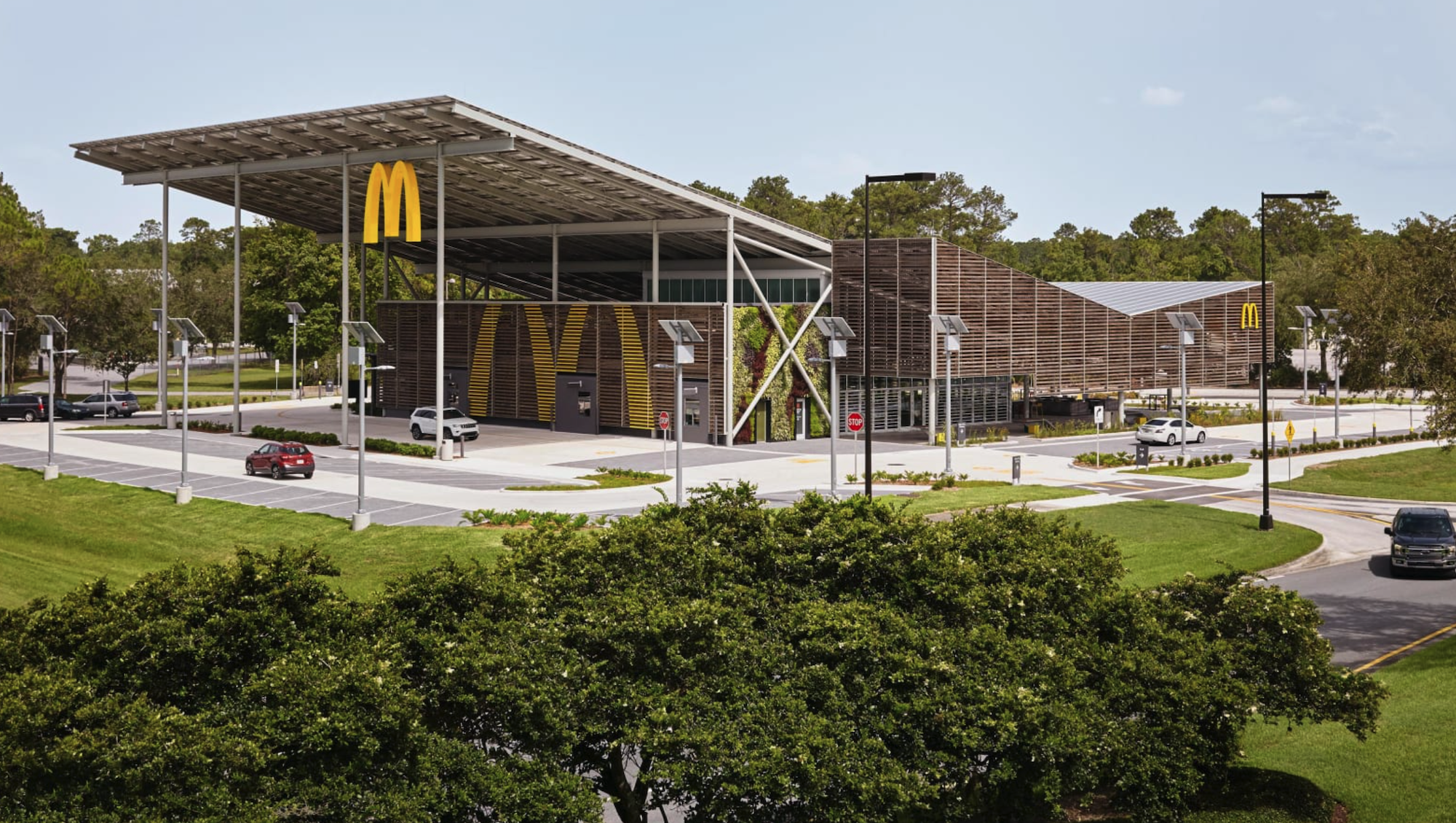The Board of Directors and the Strategic Council of the American Institute of Architects (AIA) are honoring Carol Ross Barney, FAIA, with the 2023 Gold Medal.
The Gold Medal honors an individual whose significant body of work has had a lasting influence on the theory and practice of architecture.
Barney is being recognized for her pursuit of architecture that betters the daily life of all who interact with it through nearly five decades of work. Barney earned her Bachelor of Architecture and Master of Architecture degrees from the University of Illinois at Urbana Champaign. After obtaining her bachelor’s degree, she enlisted in the U.S. Peace Corps and was deployed to Costa Rica where she worked for the fledgling Costa Rica National Park Service.
After her stint in the Peace Corps and time at the architecture firm Holabird & Root, Barney founded her practice, Ross Barney Architects, in 1981 in her native Chicago. Two years later, she was a recipient of the Plym Traveling Fellowship from University of Illinois Urbana Champaign, an opportunity that would invigorate her work in the public realm for the rest of her career.

In 1997, Barney was tasked with finding hope in the face of overwhelming tragedy as the lead designer for the Oklahoma City Federal Building. The project marked the first time a woman architect had been selected to lead such a commission. The 185,000-square-foot building, completed in 2005, integrates the necessary security measures with respect for pedestrians and the surrounding city. Seemingly at odds with the 1995 bombing incident that destroyed the Alfred P. Murrah Federal Building, Barney’s u-shaped design is a far cry from an impregnable fortress.
For nearly two decades, Barney championed the movement to inject new life into the Chicago River. The resulting Chicago Riverwalk is a 1.25-mile stretch of civic space that stretches from Lake Michigan to several of the river’s confluences. The park references the repurposed infrastructure that defines it in an effort to create discrete rooms between the bridges that span the river. Featuring kayak tours, a wine bar, veterans memorial, and countless public programs, the project has brought positive energy to Chicago’s urban realm and stands as a model for cities rethinking their water resources.
While Barney’s philosophy is evident in her work, she has, for nearly 30 years, delivered it to a generation of architects as an adjunct professor at the Illinois Institute of Technology. The topics of the studio courses Barney leads have been closely related to her practice, from water transportation to mixed use development that spurs a light manufacturing renaissance. Barney has also mentored countless talented architects in her studio, many of whom have built their own successful practices, become university architects, or discovered new paths through the values Barney instilled in them.

An unrivaled architect for the people, Barney exudes design excellence, social responsibility, and generosity. Throughout all of her work, she has endeavored to make the world a better place, and, in doing so, made an indelible mark on the profession. Her pioneering approach and ethics are clear examples of the highest aspirations of architecture.
Barney’s work has been celebrated with more than 200 national and international awards, including two COTE Top Ten Awards, the 2005 AIA Award for Public Architecture, and AIA Illinois Firm Award and Gold Medal.
Related Stories
| Nov 2, 2010
Energy Analysis No Longer a Luxury
Back in the halcyon days of 2006, energy analysis of building design and performance was a luxury. Sure, many forward-thinking AEC firms ran their designs through services such as Autodesk’s Green Building Studio and IES’s Virtual Environment, and some facility managers used Honeywell’s Energy Manager and other monitoring software. Today, however, knowing exactly how much energy your building will produce and use is survival of the fittest as energy costs and green design requirements demand precision.
| Nov 2, 2010
Yudelson: ‘If It Doesn’t Perform, It Can’t Be Green’
Jerry Yudelson, prolific author and veteran green building expert, challenges Building Teams to think big when it comes to controlling energy use and reducing carbon emissions in buildings.
| Nov 2, 2010
Historic changes to commercial building energy codes drive energy efficiency, emissions reductions
Revisions to the commercial section of the 2012 International Energy Conservation Code (IECC) represent the largest single-step efficiency increase in the history of the national, model energy. The changes mean that new and renovated buildings constructed in jurisdictions that follow the 2012 IECC will use 30% less energy than those built to current standards.
| Nov 1, 2010
Sustainable, mixed-income housing to revitalize community
The $41 million Arlington Grove mixed-use development in St. Louis is viewed as a major step in revitalizing the community. Developed by McCormack Baron Salazar with KAI Design & Build (architect, MEP, GC), the project will add 112 new and renovated mixed-income rental units (market rate, low-income, and public housing) totaling 162,000 sf, plus 5,000 sf of commercial/retail space.
| Nov 1, 2010
John Pearce: First thing I tell designers: Do your homework!
John Pearce, FAIA, University Architect at Duke University, Durham, N.C., tells BD+C’s Robert Cassidy about the school’s construction plans and sustainability efforts, how to land work at Duke, and why he’s proceeding with caution when it comes to BIM.
| Nov 1, 2010
Vancouver’s former Olympic Village shoots for Gold
The first tenants of the Millennium Water development in Vancouver, B.C., were Olympic athletes competing in the 2010 Winter Games. Now the former Olympic Village, located on a 17-acre brownfield site, is being transformed into a residential neighborhood targeting LEED ND Gold. The buildings are expected to consume 30-70% less energy than comparable structures.
| Oct 27, 2010
Grid-neutral education complex to serve students, community
MVE Institutional designed the Downtown Educational Complex in Oakland, Calif., to serve as an educational facility, community center, and grid-neutral green building. The 123,000-sf complex, now under construction on a 5.5-acre site in the city’s Lake Merritt neighborhood, will be built in two phases, the first expected to be completed in spring 2012 and the second in fall 2014.
| Oct 21, 2010
GSA confirms new LEED Gold requirement
The General Services Administration has increased its sustainability requirements and now mandates LEED Gold for its projects.
| Oct 18, 2010
World’s first zero-carbon city on track in Abu Dhabi
Masdar City, the world’s only zero-carbon city, is on track to be built in Abu Dhabi, with completion expected as early as 2020. Foster + Partners developed the $22 billion city’s master plan, with Adrian Smith + Gordon Gill Architecture, Aedas, and Lava Architects designing buildings for the project’s first phase, which is on track to be ready for occupancy by 2015.














